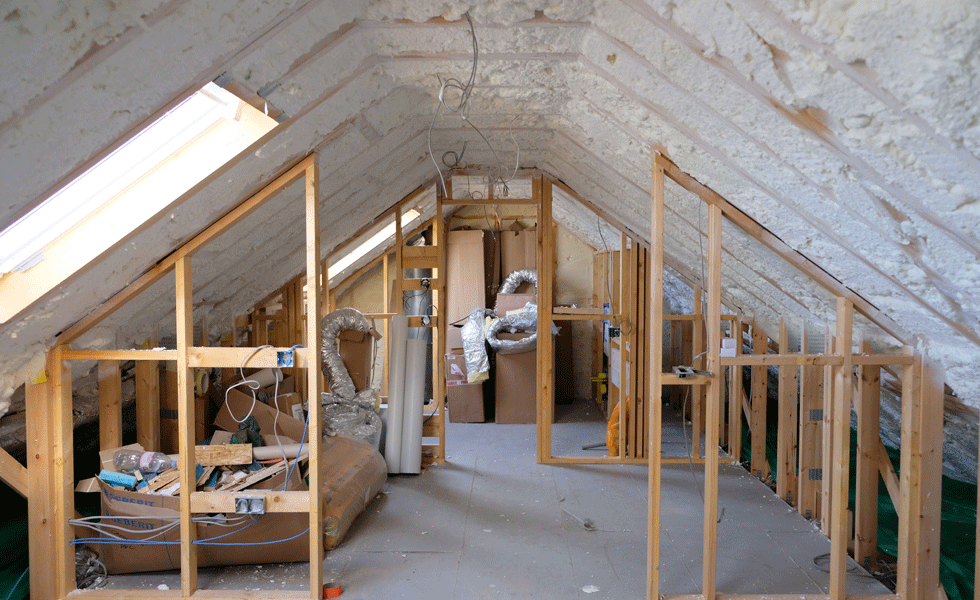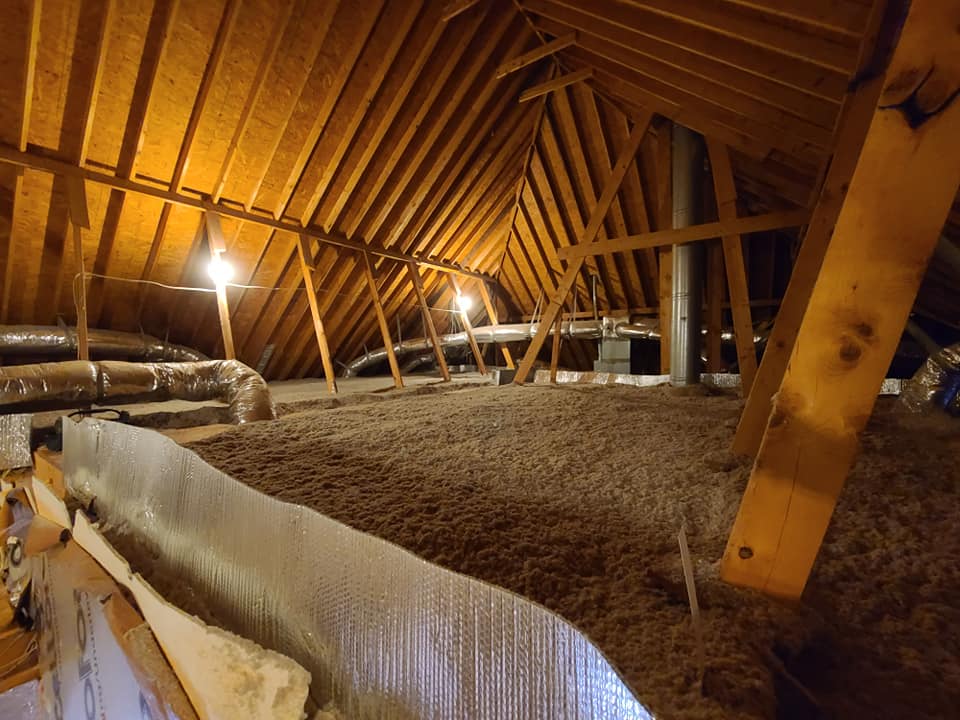How Attic Insulation DFW Can Transform Your Home's Environment Control
How Attic Insulation DFW Can Transform Your Home's Environment Control
Blog Article
Discover the Different Kinds Of Attic Insulation and Their Distinct Benefits for Your Home's Energy Effectiveness

Fiberglass Insulation
Fiberglass insulation is one of one of the most frequently made use of materials for attic room insulation due to its outstanding thermal performance and cost-effectiveness. Composed of small glass fibers, this product effectively catches air, creating a protecting barrier that aids keep constant indoor temperatures. Its high R-value per inch makes it especially efficient at standing up to heat transfer, which is essential for energy conservation in homes.
Installment of fiberglass insulation is fairly uncomplicated, often available in batts or loose-fill types, suiting numerous attic room arrangements. Additionally, it is non-combustible and immune to wetness, minimizing the risk of mold development. This resilience adds to its longevity, making fiberglass a practical lasting investment for homeowners.
Additionally, fiberglass insulation is often made from recycled materials, which enhances its eco-friendliness. The product can also add to soundproofing, reducing sound transfer between rooms. While it is essential to use safety equipment during setup to avoid irritability from the fibers, the total benefits of fiberglass insulation, consisting of energy savings and environmental factors to consider, make it a preferred selection for boosting attic room efficiency and promoting a comfy living environment.
Spray Foam Insulation
Spray foam insulation is a highly efficient alternative for attic insulation, understood for its superior air sealing and thermal efficiency. This cutting-edge insulation product is composed of a combination of isocyanate and polyol resin, which, when combined, broadens rapidly to load voids and tooth cavities in the attic room. Its ability to follow different surface areas ensures a constant barrier versus air leaks, significantly lowering warmth loss throughout colder months and warm gain throughout warmer seasons.
One of the key advantages of spray foam insulation is its high R-value per inch, which suggests it supplies excellent thermal resistance in a relatively thin application. This is particularly beneficial in attic rooms where space is typically restricted. Additionally, spray foam can assist reduce dampness buildup, decreasing the threat of mold and mildew and mold development, which can be harmful to both the framework and indoor air quality.
While the first price of spray foam insulation might be greater than conventional choices, its long-term energy financial savings, combined with raised convenience and enhanced home worth, make it a worthwhile investment for home owners looking for boosted power effectiveness. Attic Insulation DFW. Overall, spray foam insulation stands out as an effective solution for enhancing attic insulation
Cellulose Insulation

Cellulose insulation is a preferred choice for attic insulation, largely composed of recycled paper items treated with fire retardants. This ecologically pleasant choice is understood for its exceptional thermal performance, effectively decreasing warm transfer in both summertime and cold weather. The dense structure of cellulose permits it to fill up voids and gaps in attic rooms, providing a smooth obstacle versus air leakages.
One of the significant advantages of cellulose insulation is its ability to resist mold and bugs, owing to the fire retardant therapies made use of during manufacturing. Additionally, it boasts a high R-value per inch, which converts into premium power effectiveness. Homeowners can anticipate lower heating & cooling prices as an outcome of enhanced insulation.
Installment is normally accomplished through blowing loosened cellulose into the preferred location, enabling a quick and efficient process. This approach likewise decreases interruption to the existing structure. Additionally, cellulose insulation has a reasonably low ecological effect, as its manufacturing procedure utilizes recycled materials, adding to sustainable building practices.
Rock Wool Insulation
Amongst the various options for attic insulation, rock woollen, likewise called mineral woollen, attracts attention as a result of its excellent thermal and acoustic performance. Made from recycled or natural materials, rock woollen is developed by melting rock and spinning it right into fibers, causing a product that uses exceptional insulation homes.
Among the considerable benefits of rock wool insulation is its high R-value, which suggests its effectiveness in standing up to warmth circulation. This characteristic not just enhances energy performance but likewise adds to keeping a comfy interior temperature year-round. Additionally, rock wool is naturally fireproof, making it a safer option for homes as it can stand up to heats without melting or launching toxic fumes.
Additionally, rock wool insulation succeeds in soundproofing abilities, successfully lowering sound transmission in between spaces and from outside resources. Overall, rock woollen insulation supplies a detailed remedy for improving power effectiveness, security, and convenience in residential setups.
Glowing Obstacle Insulation
Glowing barrier insulation works as an effective option for minimizing heat transfer in attic rooms, specifically in warmer climates. This kind of insulation works by showing convected heat far from living spaces, thereby decreasing the quantity of heat that goes into a home throughout warm climate - Attic Insulation DFW. Usually made up of a very reflective material, such as light weight aluminum foil, radiant obstacles are mounted in attics, facing the roofing, where they can obstruct incoming warmth from the sunlight
The key advantage of radiant barrier insulation browse around here is its capability to lower cooling costs. By reflecting warmth as opposed to absorbing it, radiant barriers can help preserve an extra stable indoor temperature, decreasing the work on cooling systems. This effectiveness equates into lower energy expenses and boosted comfort for house owners.
In enhancement to power cost savings, radiant barriers can also add to boosted interior air high quality. By lowering warm accumulation, they help decrease humidity levels, which can prevent mold and mildew development and improve overall air circulation. When installed appropriately, radiant barrier insulation can be an important addition to any energy-efficient home, making it a worthy factor to consider for homeowners looking to boost their attic insulation method.
Verdict
In final thought, recognizing the various kinds of attic insulation-- fiberglass, spray foam, cellulose, rock woollen, and radiant barriers-- makes it possible for property owners to make informed choices concerning power performance. By choosing the appropriate insulation material, significant reductions in energy expenses can be achieved, along with enhancements in indoor convenience.

In conclusion, understanding the various kinds of attic insulation-- fiberglass, spray foam, cellulose, rock woollen, and glowing obstacles-- enables home owners to make educated decisions pertaining to power effectiveness.
Report this page